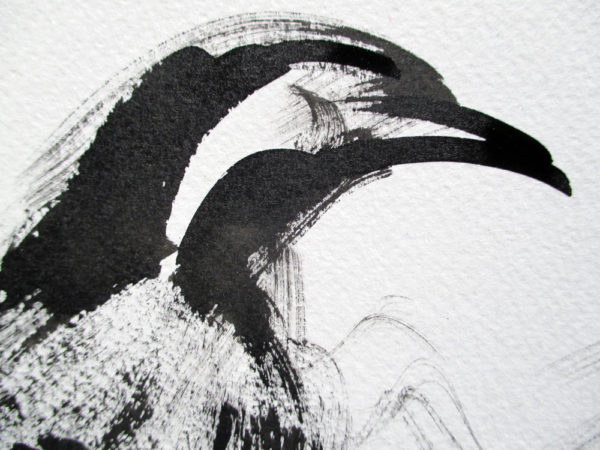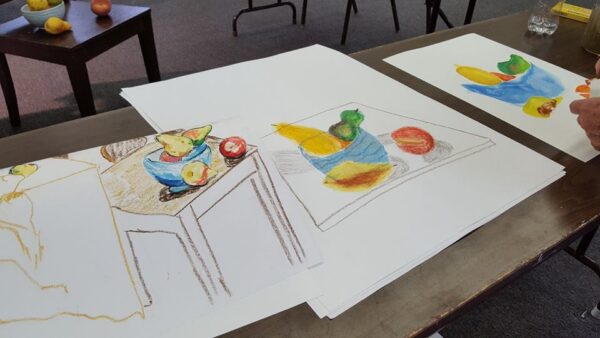As I get deeper into the practice of teaching, I see how my own approach is present in each of the classes I offer. Whether it is a fun loose evening of art and music, or an expansive series over 5 weeks…whether it is exploring abstraction, poetic metaphor or how to find visual direction… I teach from how I work myself. I don’t teach students to make art that looks like mine, but I teach in hopes that each artist can be their most inspired selves. This story in the Port Townsend Leader explains my background and philosophy really well.
Port Townsend School of the Arts encourages faculty to dream up class ideas that come from our own experience. And, so my roster includes a mix of workshops, and sessions that cover abstraction, inspiration, and hands on fun.

Reverse Ekphrastic: Your Visual Response. This class was born from a wonderful artist and poet collaboration project I was involved in, called The Roadstead Project (I write more about that here). Ekphrastic is an ancient poetic form in which a writer is inspired by another form of art, often a painting. My role in the collaboration was reverse: I was prompted by a poem to make art.
In this class, we will use different ways to visually honor a poem. It can be narrative (a picture of a scene or a person, etc.); it can be abstract (colors, shapes, lines) expressing the energy or mood; it can be typographic (one word or many handwritten/painted); it can be focussed on single poem-moment or object. I will provide a wide selection of poems (or students can bring any of their favorites) and guide art-making through an iterative process of small sketching, larger sketching and painting.
Poetry can be a powerful instigator of creative expression. I think one poem can inspire so many expressions. As an example, I used Wallace Stevens’ famous poem, “Thirteen Ways of Looking at a Blackbird” and made an object-oriented illustration. I can imagine further exploration: taking it into color, repetition, and abstraction.

Student work from “Ways to Inspiration” class shows different degrees of abstraction throughout iterations, and the effects of working in different media.
Ways to Inspiration. This class closely models the way I work… from photos, from life, and then from the sketches themselves. A liberating aspect of this approach is how it loosens you up… we work in an iterative fashion. It is endlessly interesting to see where an initial image capture will go. We work small, with simple materials, then get bigger with more fluid media.Working across different media also transforms the expression. As an artist, when you fall in love with the process, beautiful work comes forth.

Make It Abstract. In this class, we work from photos and play with the elements of abstraction. Ways of seeing abstraction can include varying degrees of simplification, selective focus, macro and micro views, and color play (to name a few!). For myself, I find that taking a first drawing or painting, and simplifying and working with it again and again can show so many aspects of a piece, often arriving at an abstraction of beauty and meaning. You can see this range in these examples above from a pomegranate series I created in 2000.
And, simple fun classes are Spin Your Art, where we create album cover art, whilst sipping wine and hearing good music; and Papier Mache for GrownUps, in which we make bowls and vessels using this enduring art form, exploring pattern and design for surface decoration. I think art should be pleasure and these classes emphasize that aspect of creativity.